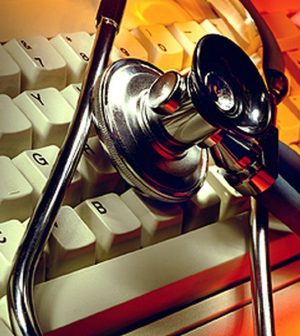- Navigating Your Midlife Crisis: Embracing New Possibilities
- City Raccoons Showing Signs of Domestication
- Mapping the Exposome: Science Broadens Focus to Environmental Disease Triggers
- One Week Less on Social Media Linked to Better Mental Health
- Your Brain Changes in Stages as You Age, Study Finds
- Some Suicide Victims Show No Typical Warning Signs, Study Finds
- ByHeart Formula Faces Lawsuits After Babies Sickened With Botulism
- Switch to Vegan Diet Could Cut Your Greenhouse Gas Emissions in Half
- Regular Bedtime Does Wonders for Blood Pressure
- Dining Alone Could Mean Worse Nutrition for Seniors
The Doctor Will (Virtually) See You Now

Telemedicine is playing an ever-expanding role in the U.S. health care landscape.
Among the reasons: a growing national shortage of doctors, both primary care and, in certain areas, specialists. And one-quarter of the population lives in rural areas without easy access to care.
So, telemedicine has stepped in to help fill the gap. In fact, more than 10 million Americans now use it every year.
Telemedicine, or telehealth, are terms for virtual office visits — video chats made through your smartphone, tablet or computer, sometimes with no waiting at all. You can see and speak with a doctor using real-time audio and video technology. Services can vary from getting a diagnosis and a prescription for minor medical issues, to ongoing monitoring of chronic conditions — especially helpful to older adults.
Some health insurance providers now offer telehealth as part of some of their plans. It’s usually for a fee that’s lower than a co-pay or, if you have a high deductible, less than you’d pay out of pocket for an office visit.
A study published in the journal Health Affairs found that the most common virtual visits were for acute respiratory problems, urinary tract infections and skin complaints. Telemedicine can be very helpful with dermatology problems because this specialty has a shortage of doctors.
Telemedicine for mental health care is also growing. It helps people stick with their treatment plan and removes the potential stigma of going to a mental health clinic — and it can be as effective as face-to-face appointments, studies have shown.
More information
You can learn more about telemedicine and find more resources at the U.S. National Institutes of Health’s National Institute of Biomedical Imaging and Bioengineering.
Source: HealthDay
Copyright © 2025 HealthDay. All rights reserved.










